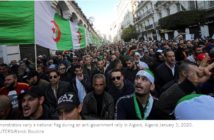While the Arab revolutions were underpinned by a demand for greater political freedom, economic frustrations–particularly among the region’s large youth population–were also a factor. Millions of young people with university degrees languish for years unemployed, with no hope of getting a job that meets their expectations. Millions more are not completing sufficient years of school to master basic literacy and numeracy skills. As the 2002 Arab Human DevelopmentReport noted, adult literacy in the Arab world is shamefully low–and lower than the average in developing countries.
However, countries are making efforts to tackle their literacy challenges. The above graph shows that every country has made concrete progress in tackling illiteracy. Tunisia, Saudi Arabia, Lebanon, and Bahrain all boast youth literacy rates above 96 percent, but Yemen, Egypt, and in particular, Morocco, still have a long way to go.
The solution to illiteracy is not just government spending: it is a matter of implementing effective programs and putting these programs into action for every child. Egypt’s Early Grade Reading Program is one example of the sort of educational innovation that needs to happen.
Beating illiteracy is just the first step in equipping citizens for a productive economic life. Mohamed Bouazizi, the desperate Tunisian street vendor whose self-immolation sparked the region’s uprisings, was not illiterate–he had the equivalent of a high school degree. Inculcating students with critical thinking and soft skills is also a prerequisite. But the burden of some 60 millionilliterate adults in the Arab world, most of whom are women, is a heavy weight indeed and one that is only beginning to ease with the current generation.






